Alaska’s Buckner Building: A Former Cold War-Era Military Base
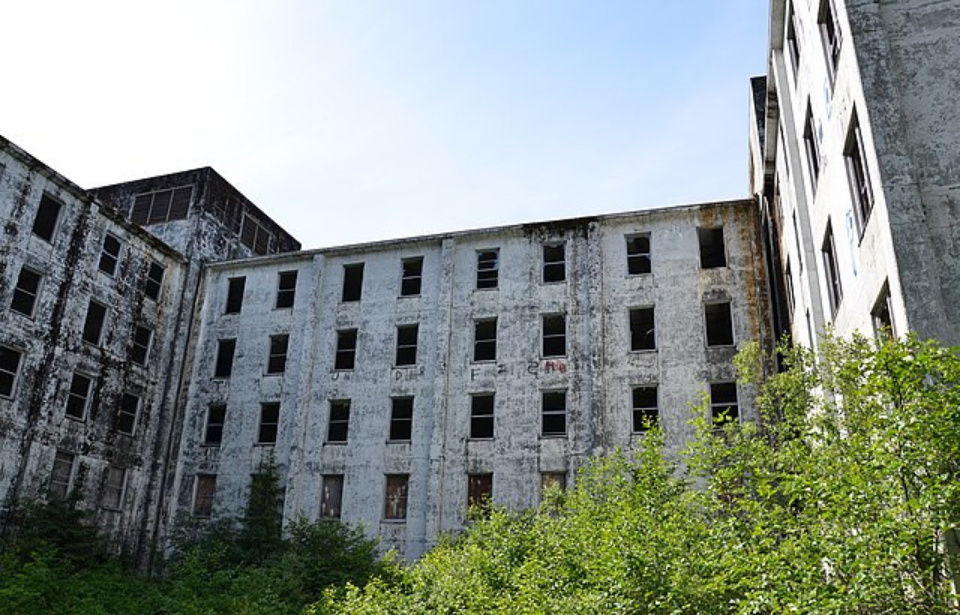
The Buckner Building, named for Gen. Simon Buckner, is a former US military base located in Whittier, Alaska. Situated along the western edge of the Prince William Sound, it was thought to be an ideal location to monitor the sky during the Cold War. Now, however, it is a shell of its former self, covered in graffiti and reclaimed by nature.
The need for a military base during World War II
The history of the Buckner Building begins with its namesake. In 1940, Simon Buckner was promoted to the rank of brigadier general and named the commander of the US Army‘s Alaska Defense Command. One of his assignments was to fortify and protect the state from enemy attacks – primarily by the Japanese.
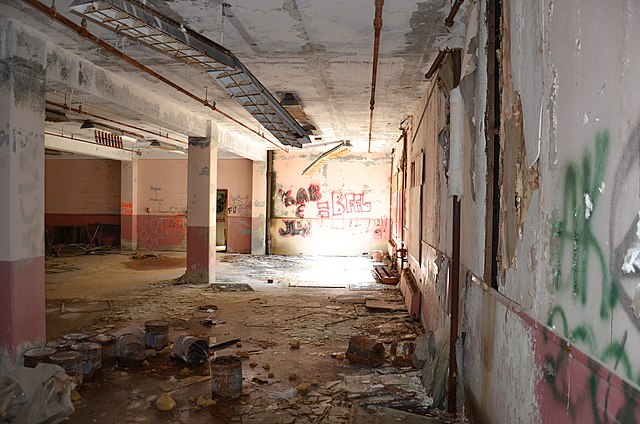
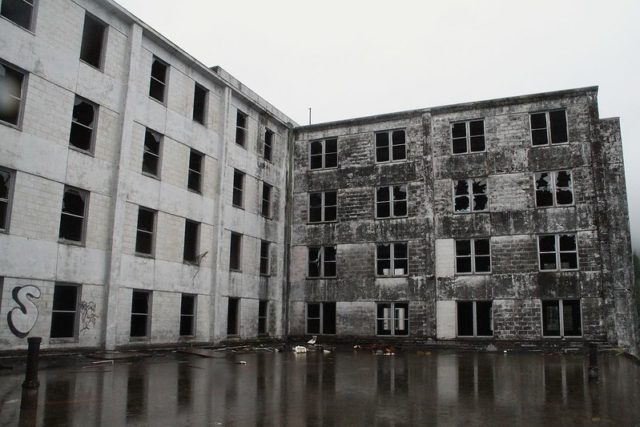
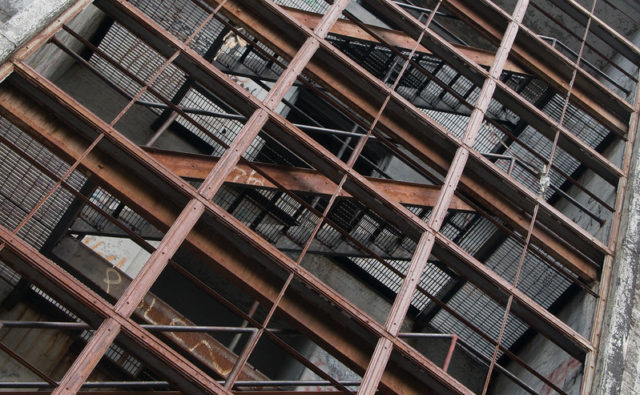
He and many other Army commanders feared the Japanese would make use of islands off the coast of Alaska to launch strikes against the west coast of the US. As such, he recommended a facility be built that was bomb-proof and had sufficient storage space and access to a local power plant.
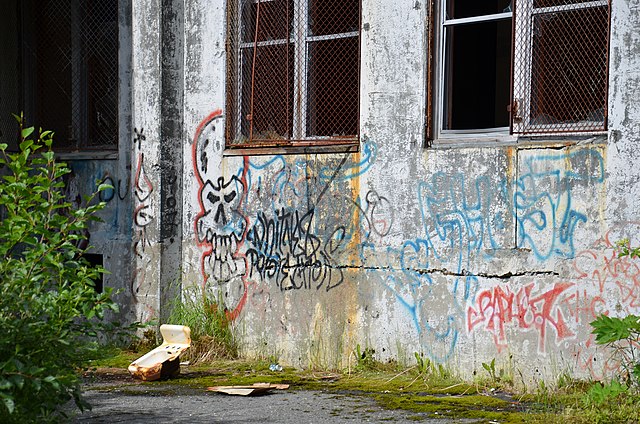
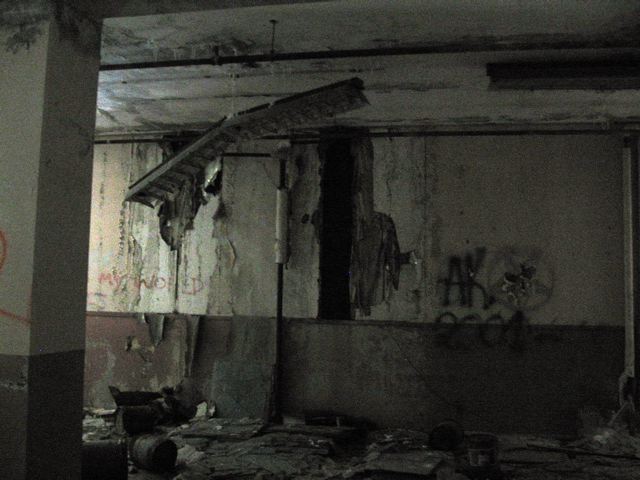
Whittier was considered the perfect place for a military base for two reasons. The constant cloud cover protected it from enemy airstrikes. Its bay was also ice-free year-round, meaning its deep-water ports could be in constant use. This was vital, as the town’s railroad ports supplied Anchorage with all the military equipment needed to protect it.
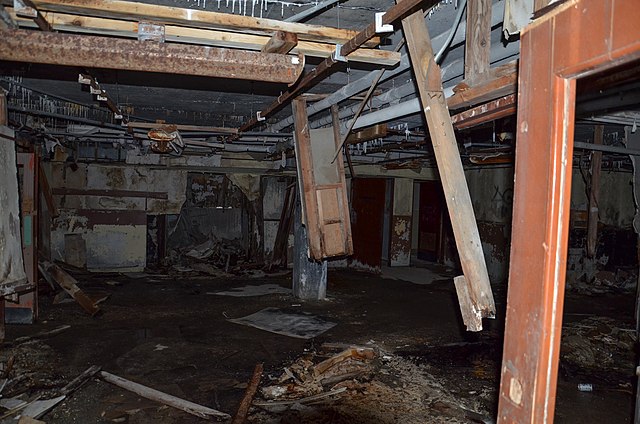
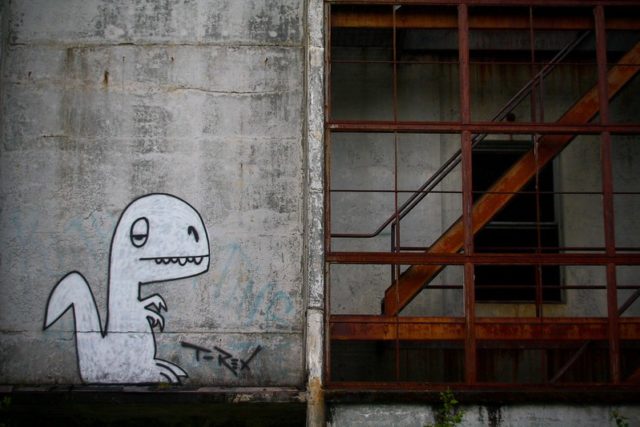
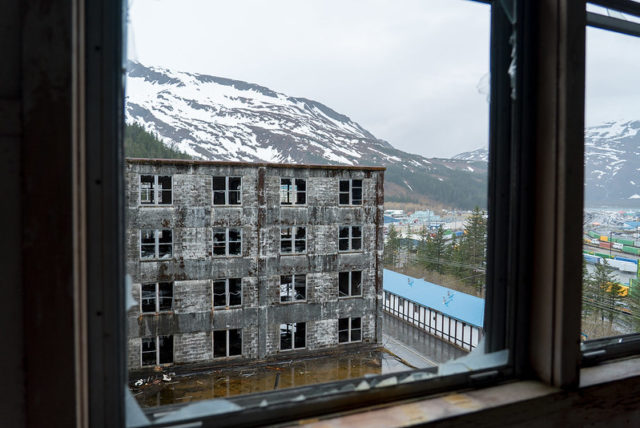
As the war in the Pacific raged on, Buckner was called to fight. He lost his life during the final days of the Battle of Okinawa, becoming the highest-ranking military officer in the Pacific Theater to be killed in action during World War II.
Construction of the Buckner Building
At the onset of the Cold War, the US Army Corps of Engineers was tasked with quickly constructing a building that could house up to 1,000 soldiers stationed in Whittier for service at Camp Sullivan. Work began in 1949 and finished four years later.
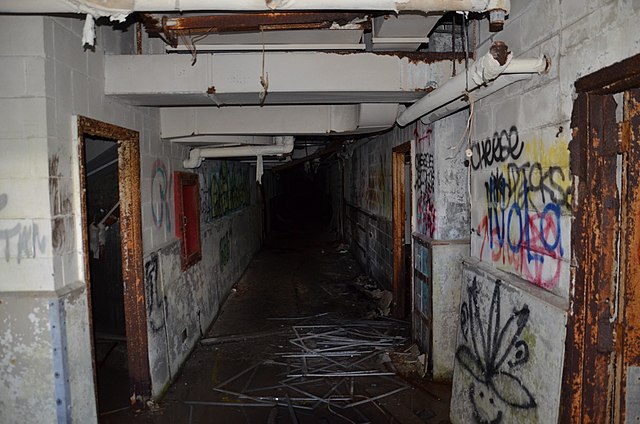
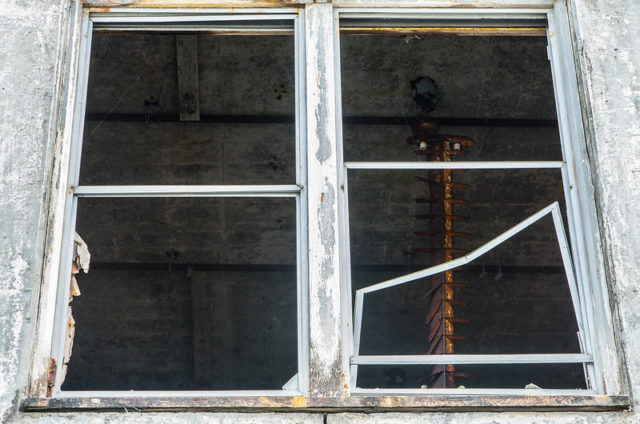
Known as the Buckner Building, the “City Under One Roof” and, more formally, the Composite Bachelor Housing Service and Recreation Center, the 275,000-square-foot property was just what the Army needed. It had six visible floors – eight levels if you include the basement and the floor that housed the ventilation equipment – and was built of thick concrete used to defend against bombings and the harsh Alaskan weather.
The elevator shafts and stairwells also acted as reinforcements for the building.
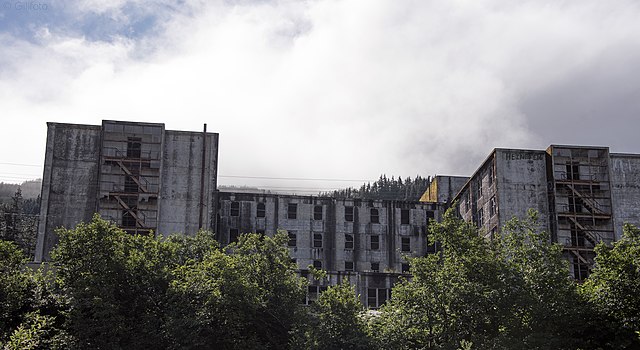
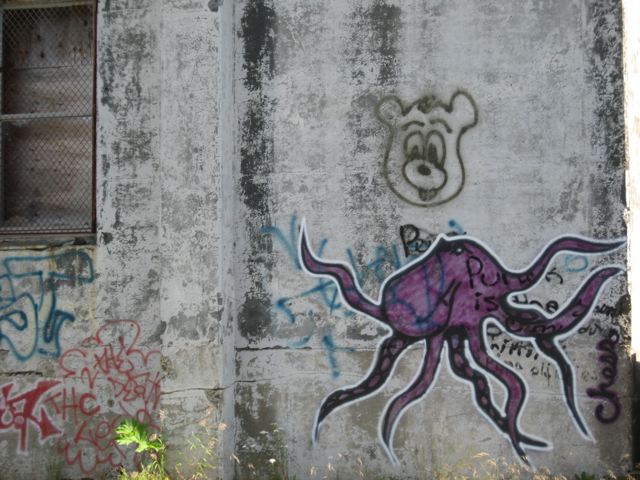
Along with containing housing for soldiers, the Buckner Building also included a power plant, hospital, four-lane bowling alley, 320-seat movie theater, pool and gymnasium, six-cell jail, barbershop, bakery and commissary, church, radio station, bakery, postal exchange, photography laboratory, cafeteria and kitchen, officers’ lounge, library and rifle range.
1964 Alaska earthquake
On March 27, 1964, the Prince William Sound area was struck by a magnitude 9.2 earthquake. The strongest earthquake to strike North America – and the second most powerful in recorded world history – it caused a 40-foot tsunami that struck Alaska’s shoreline and killed 139 people. Of that total, 13 lived in Whittier.
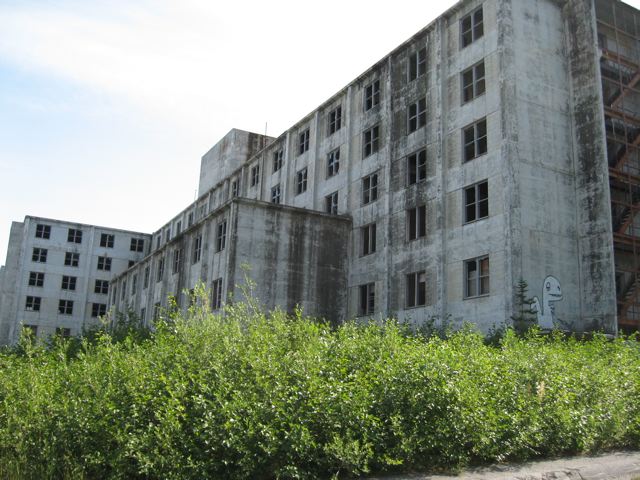
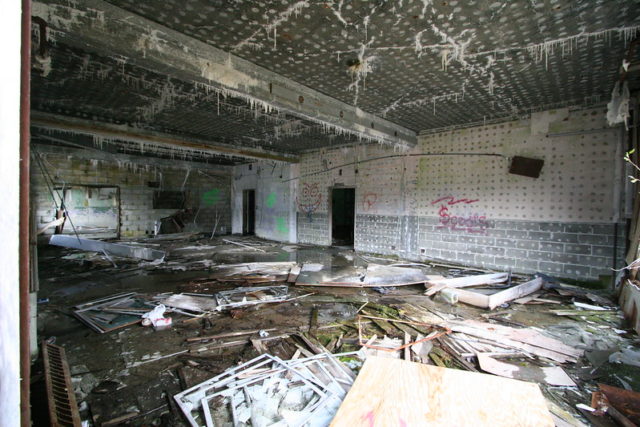
According to reports, damage to both private and federally owned property amounted to over $5 million. The tsunami, in particular, severely damaged Whittier’s railroad depot and caused its oil tank storage to explode, sending burning oil “into the bay for miles.”
The Buckner Building was able to survive with relatively minor damage, due to its foundation being built on bedrock. The power plant was the only part of the property to sustain damage, suffering two ruptured 10-inch water lines.
The military pulls out, leading to decline
The Buckner Building continued to operate until 1966, after which it was turned over to the General Services Administration for disposal. The military had pulled out earlier, with administrative control over the area’s military personnel transferred to Fort Richardson.
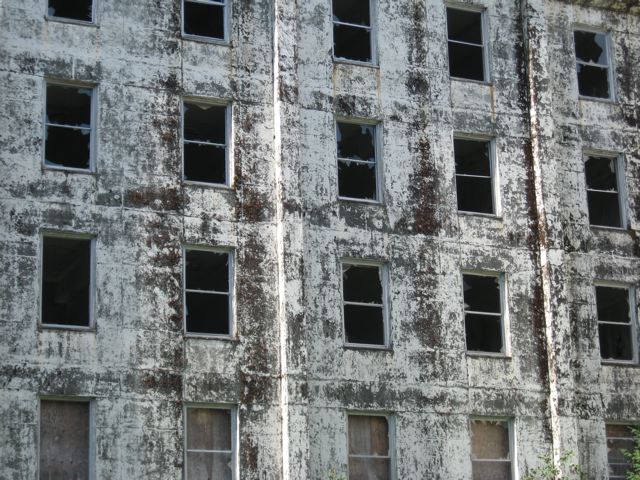
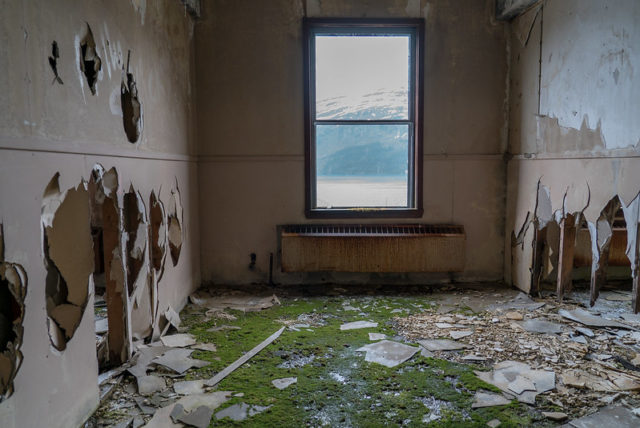
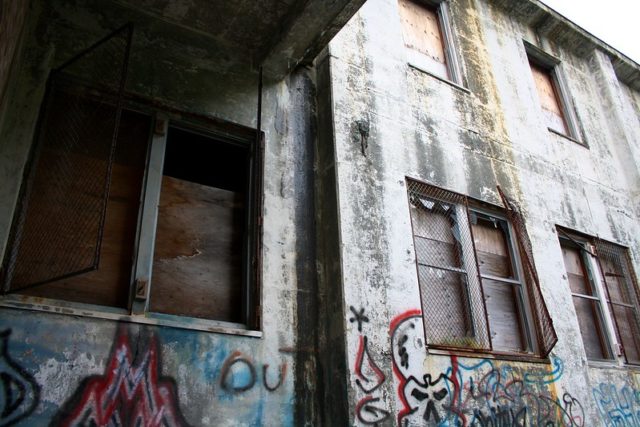
Following the military’s exit, the building was owned by a handful of people and companies. It was finally purchased by the citizens of Whittier in 1972 but quickly fell into disrepair. Before long, windows had been smashed and doors, removed, leaving the building to be taken over by groundwater.
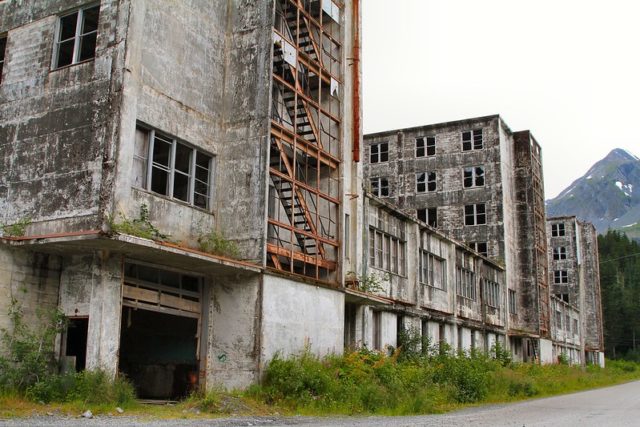
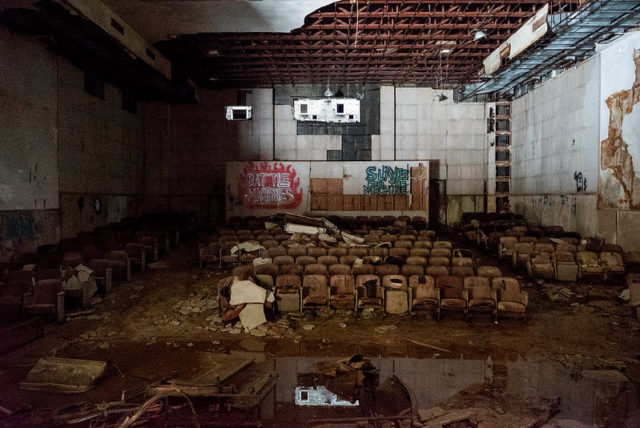
The Buckner Building went into foreclosure in 2016. A structural assessment concluded it was unlikely it could be rehabilitated for residential use, leading the Whittier Department of Public Works and Public Utilities to begin work to restore it to its previous history. This went against the opinion of the Alaska Department of Environmental Conservation, which recommended it be torn down.
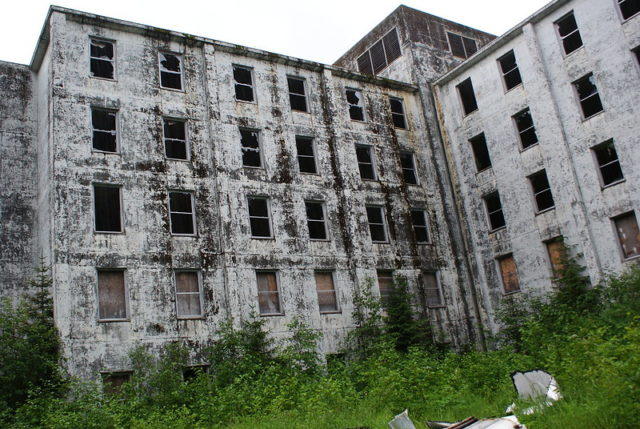
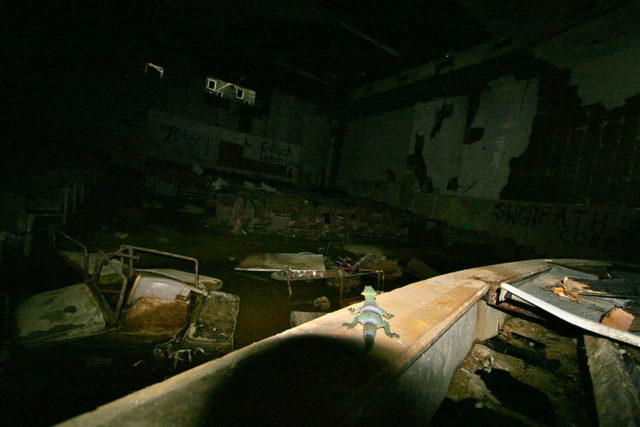
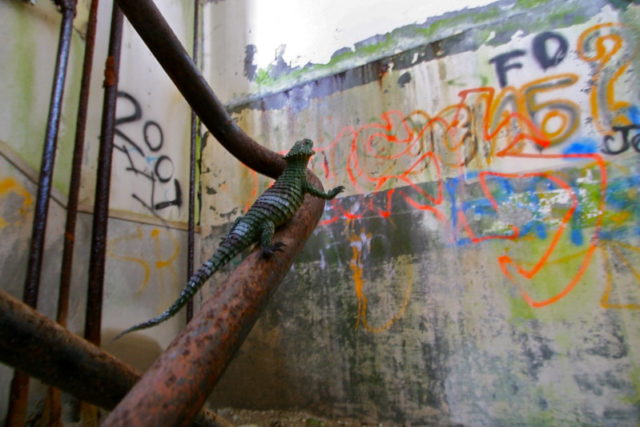
Today, almost every room on the ground floor of the building is filled with inch-deep water, while the rest of the floors are filled with mold, asbestos and mildew. Vegetation has begun to creep its way inside, with animals making nests in the debris and from wires hanging down from the ceiling.
While there have been recent efforts to keep trespassers out, that hasn’t stopped urban explorers from sneaking in to marvel at the decay and the graffiti that covers both the interior and exterior.
